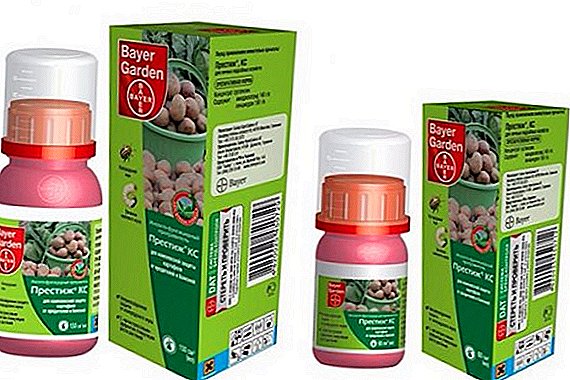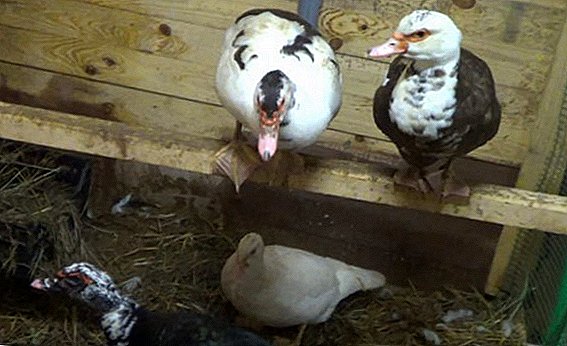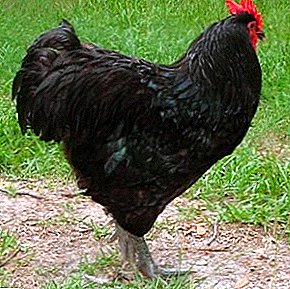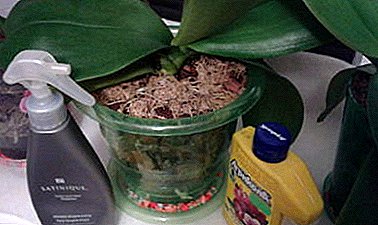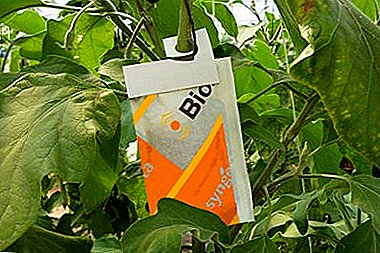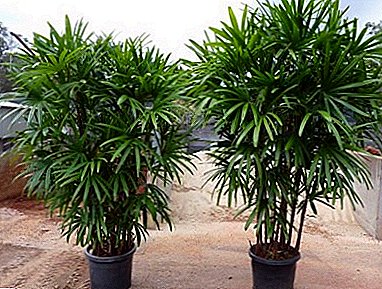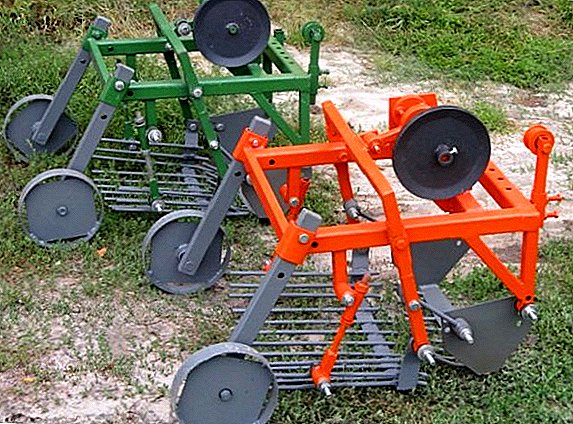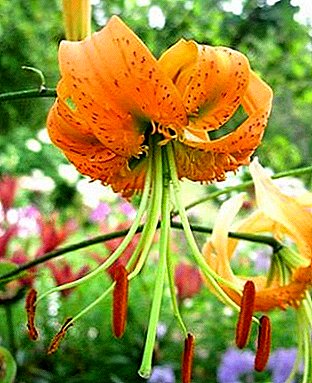
Lilies - one of the most amazing plants with a long history.
They began to grow more than three thousand years ago. In Christianity, its flowers were considered a symbol of purity and chastity.
With the help of them they loved to decorate the royal chambers, notable monastic gardens.
Now flower growers know about 110 representatives of this genus. One of the most rare, unique species is Henry Lily.
Description
 Lily Species Henry - comes from the Chinese province of Hu Bei, Gui Zhou.
Lily Species Henry - comes from the Chinese province of Hu Bei, Gui Zhou.
There she was first spotted by Irish botanist Augustin Henry, who collected samples of the best plants for the collection of the British Royal Botanic Gardens Kew.
Thanks to the researcher, she gained her name.
The plant belongs to a rare multi-flowered hybrid variety, but it is easily distinguished externally.
Stem elongated, slightly curved, well leafy, with numerous root processes.
In the natural environment it can reach up to 120-190 cm. The onion is large, red-violet, with a diameter of 15-20 cm.
Leaves are leathery, saturated dark green color, oblong-latent form, grow to 10-18 cm long. Branches drooping.
The flowers are large, apricot-colored with dark reddish beards, turbid-shaped. With good care can reach a diameter of 8-9 cm. Brownish pollen.
REFERENCE: Flowering time is June-August.
Lily Henry photos:
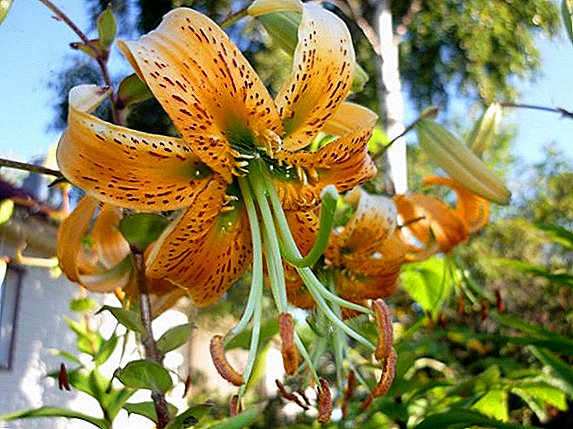

On our site you can read articles about other types of lilies: Marlene, Tacca Chantrier, Amazonian.
Home care
Lily Henry is a vibrant flower that needs attention and good care. Knowledge of simple rules will help to take care of it properly and to grow without problems, not only in the open field, but even at home.
How to plant?
 One of the main secrets of growing homemade lilies, Henry - the proper preparation of planting material.
One of the main secrets of growing homemade lilies, Henry - the proper preparation of planting material.
When choosing onions, pay attention to the appearance: they must be strong, healthy, large, weighing 40-45 grams.
Inspect for visible cuts on the surface, damage, traces of rot.
Before planting the plant, it is recommended to stratify by wrapping the bulbs with moss and placing them in a cold store for two to three weeks. Keep the temperature 4-5 degrees.
TIP: When planting, it is desirable to soak the bulbs for two hours in a weak solution of potassium permanganate, then soak up the growth stimulator, add nutrient fertilizers.
Planted Henry's home lily can be on a sandy pillow. Root the bulb 10-14 days at a temperature of 5-10 degrees.
The process of planting Lilies in the pot can be viewed on the video below:
The choice of soil pot for plants
The soil for growing should be light, nutritious. You can prepare a mixture of two parts of leaf and garden land, one part of rotted cow manure or peat, sand, a handful of wood ash. Suitable as a special mixture for bulbous plants.
TIP: The pot is preferable to choose from natural breathable materials (ceramics, clay), the volume of 2.5-4 liters per bulb. At the bottom to make a drainage embankment.
Watering
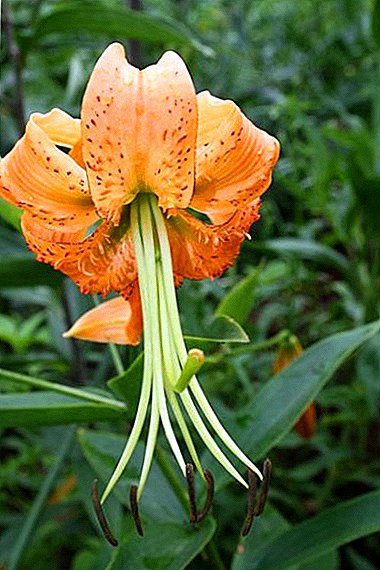 Moisturize the ground should be regularly. Between irrigation, the ground should be about 1/3 dry.
Moisturize the ground should be regularly. Between irrigation, the ground should be about 1/3 dry.
Flow water can not be used. Use room temperature water for about 24 hours.
During flowering moisturize more often. In the summer, spray the leaves with cool water, but make sure that it does not fall on the flowers.
Water should be poured under the stem, so as not to wet the lower leaves.
After the death of flowers, watering is reduced.
Top dressing
Fertilizers should be every 10-14 days. In the period of active growth suitable feeding with a high nitrogen content.
When flowering begins, you can apply fertilizer with phosphorus, potassium.
You can use special liquid complex fertilizers for bulbous plants.
TIP: If periodically loosening the top layer of the earth, to make wood ash, Henry Lily will be hardy, large.
Lighting
Home lily does not like bright sunlight. Place the pot near the window in the penumbra or create a diffused lighting.
In winter, no additional light source is required.
Temperature
Room temperature should be moderate (19-24 degrees). In the summer, take the flower to the street so that he breathes.
Pruning plants
For proper pruning should follow simple rules. In order not to set seeds, you should immediately remove all wilted flowers. This will help maintain strength for subsequent flowering.
TIP: Cut buds can be a sterile blade, shears or a sharp knife, pre-treated with potassium permanganate.
Henry's home lilies are rarely used to create bouquets, but if you decide to do this, you need to carefully cut the flower with a clean blade or shears, leaving about one third of the length of the stem. It will also help avoid seed ovary.
Transfer
 During the whole season, the transfer of lily henry is not required. In the spring, in the summer it should grow in the same capacity.
During the whole season, the transfer of lily henry is not required. In the spring, in the summer it should grow in the same capacity.
For transplantation, you need to wait for the buds, leaves and stems to wither.
At this time Henry's lily is watered and fed with mineral and organic fertilizers 1 time per week.
Pruning plants should not be carried out.
The bulb must be filled with nutrients for the next vegetative season.
When the above-ground part dries out, soil moisture will stop. After 2 weeks, the bulb can be removed from the ground. Children can immediately pinch off and transplant into separate containers for growing.
The bulbs are washed under warm water, treated with a solution of potassium permanganate, cut off the shoot and cleaned in storage in the refrigerator until the next planting. It is recommended to store in a plastic bag wrapped in moss or sawdust.
Breeding
The easiest way - the reproduction of the flower kids. When the bulb is fully formed, they are carefully separated from the mother and planted into the soil to a depth of two centimeters so that the upper part protrudes above the ground.
Be attentive to transplanting babies.
With a maternal bulb, they get enough nutrients, are formed and grow faster. If during the transplantation you notice that the children are still too small, it is better to transplant the flowers with them and wait until they grow up and get stronger.
TIP: Some growers use seeds, but this process is rather laborious and in this case it will not work to keep the parental signs. It is better to use the onion.
Diseases and pests
 To minimize the appearance of diseases it is important to properly care for the indoor flower.
To minimize the appearance of diseases it is important to properly care for the indoor flower.
Bulb rot - One of the most common diseases.
The culprit of the disease becomes excessive watering, the content at high humidity and low air temperature.
How to help the plant? If the damage is not large, you can try to dig an onion, rinse it under warm water, remove the rot, process the bulb with a solution of potassium permanganate, process the sections with charcoal.
Then leave the onion to dry for 2-3 days and land in a new substrate. Capacity is not necessary to replace. Rinse well and sterilize. With a strong defeat save the plant will not work.
Dangerous enemies for the variety of Henry can be scythes, spider mites and mealybugs. They cause irreparable damage to houseplants and with untimely help can lead to his death.
From pests helps the treatment of special insecticides against insects. You can try to remove the spider mite from the leaves and stems with a cotton swab moistened with soapy water. Then rinse the leaves under running water. Pay attention to the humidity in the air at home!
ATTENTION: Too dry air - the main cause of spider mites.
Benefit and harm
 Lily Henry is a delightful flower.
Lily Henry is a delightful flower.
It complements the interior of the apartment, creates a homely atmosphere, brings positive emotions.
But, with growing a plant you need to be careful.
Keep the flower should be in a spacious, open, well-ventilated areas.
It is not recommended to grow it in the bedroom, nursery.
ATTENTION: The aroma of the flower can cause headache, drowsiness, nausea, allergic reactions. Phytoncides are so specific that they can be compared with lilies of the valley or hyacinths.
Lily Henry can be a great gift for yourself and your family. Take care of her correctly and she will long please her charming flowers.


